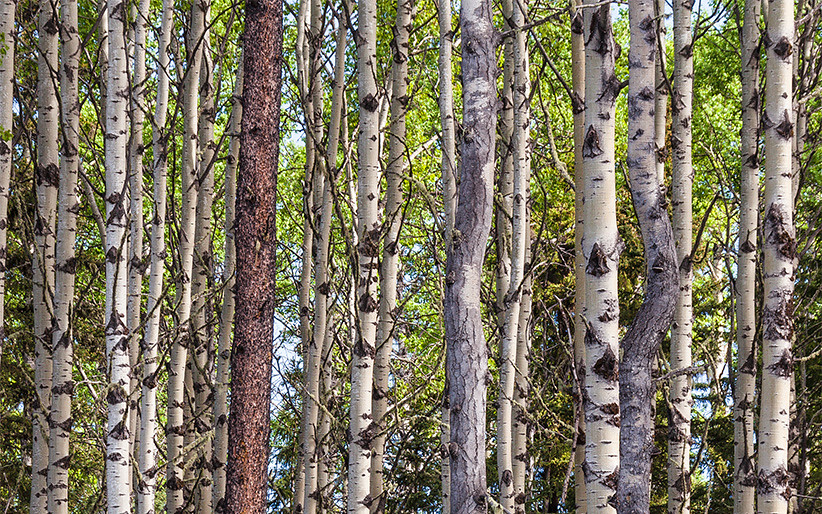Populus tremuloides is a deciduous tree native to cooler areas of North America, one of several species referred to by the common name aspen. It is commonly called quaking aspen,[1][2][3] trembling aspen,[1][2] American aspen,[2]Quakies,[1] mountain or golden aspen,[4] trembling poplar,[4] white poplar,[4]popple,[4] and even more names.[4] The trees have tall trunks, up to 25 meters (82 feet) tall, with smooth pale bark, scarred with black. The glossy green leaves, dull beneath, become golden to yellow, rarely red, in autumn. The species often propagates through its roots to form large groves originating from a shared system of rhizomes.
Populus tremuloides is the most widely distributed tree in North America, being found from Canada to central Mexico.[3][5] It is the defining species of the aspen parkland biome in the Prairie Provinces of Canada and extreme northwest Minnesota.
(From Wikipedia, April 2017)




